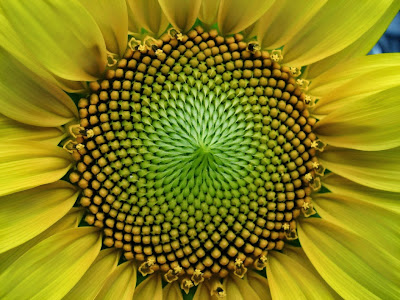Fibonacci Sequence
Over the years, artists and architects have used the golden ratio to set the proportions of their paintings and sculptures, sometimes on purpose and sometimes by happy accident. Even the TELUS World of Science building incorporates the Fibonacci sequence—on purpose!—creating a connection to the surrounding environment. And to the pine cone.
To show just how handy his new system was, Fibonacci created and solved a series of mathematical puzzles. Here's an example:
Take a pair of hypothetical rabbits. Every month, a mature pair of rabbits can produce a pair of babies. These bunnies take two months to grow up and then they too can produce babies. If none of the rabbits die, how many rabbits will you end up with after three months? After six months? After two years?
Month 1: Two adult rabbits (one pair of adults)
Month 2: Two adults and two babies (one pair of adults)
Month 3: Four adults and two babies (two pairs of adults)
Month 4: Six adults and four babies (three pairs of adults)
Continue the puzzle, counting the pairs of adult rabbits at each step, and you'll get the sequence 1, 1, 2, 3, 5, 8, 13, 21, and so on.
While Fibonacci's rabbits aren't very realistic, the same sequence shows up when you count the reflections of light from double-paned glass, or when you compute the family tree of a honeybee.
Take a closer look at the sequence. Each number in the sequence is the sum of the two numbers that come before it. But that's not all. Get a calculator and divide each number in the sequence by the number before it. The first few are:
1 ÷ 1 = 1
2 ÷ 1 = 2
3 ÷ 2 = 1.5
5 ÷ 3 = 1.66666...
8 ÷ 5 = 1.6
13 ÷ 8 = 1.625
Keep going and the result gets closer and closer to a number known as the golden ratio. Made from the numbers of the Fibonacci sequence, the golden ratio begins as 1.6180339887 and continues without repeating or ending.
The Fibonacci sequence appears in nature, in a startling variety of places. You can find it in the branching patterns of plants and in the arrangement of scales on a pineapple. Most flowers have a Fibonacci number of petals, and the golden ratio describes the curl of spiral shells and elephant tusks.
Look at a pine cone from the bottom. You'll see that the scales spin outward in two spirals, one to the left and one to the right. Compare the number of "left-handed" spirals to the number of "right-handed" ones. The result will be a pair of neighbours in the Fibonacci sequence.
The Fibonacci Sequence
Leonard Bigollo (aka Fibonacci, "son of good nature") was an Italian mathematician who lived in Pisa, Italy, home of the leaning tower. In the thirteenth century, he wrote a revolutionary book that introduced Europe to Arabic numerals, which allowed merchants and engineers to move away from the awkward system of Roman numerals.To show just how handy his new system was, Fibonacci created and solved a series of mathematical puzzles. Here's an example:
Take a pair of hypothetical rabbits. Every month, a mature pair of rabbits can produce a pair of babies. These bunnies take two months to grow up and then they too can produce babies. If none of the rabbits die, how many rabbits will you end up with after three months? After six months? After two years?
Month 1: Two adult rabbits (one pair of adults)
Month 2: Two adults and two babies (one pair of adults)
Month 3: Four adults and two babies (two pairs of adults)
Month 4: Six adults and four babies (three pairs of adults)
Continue the puzzle, counting the pairs of adult rabbits at each step, and you'll get the sequence 1, 1, 2, 3, 5, 8, 13, 21, and so on.
While Fibonacci's rabbits aren't very realistic, the same sequence shows up when you count the reflections of light from double-paned glass, or when you compute the family tree of a honeybee.
Take a closer look at the sequence. Each number in the sequence is the sum of the two numbers that come before it. But that's not all. Get a calculator and divide each number in the sequence by the number before it. The first few are:
1 ÷ 1 = 1
2 ÷ 1 = 2
3 ÷ 2 = 1.5
5 ÷ 3 = 1.66666...
8 ÷ 5 = 1.6
13 ÷ 8 = 1.625
Keep going and the result gets closer and closer to a number known as the golden ratio. Made from the numbers of the Fibonacci sequence, the golden ratio begins as 1.6180339887 and continues without repeating or ending.
The Fibonacci sequence appears in nature, in a startling variety of places. You can find it in the branching patterns of plants and in the arrangement of scales on a pineapple. Most flowers have a Fibonacci number of petals, and the golden ratio describes the curl of spiral shells and elephant tusks.
Look at a pine cone from the bottom. You'll see that the scales spin outward in two spirals, one to the left and one to the right. Compare the number of "left-handed" spirals to the number of "right-handed" ones. The result will be a pair of neighbours in the Fibonacci sequence.





No comments:
Post a Comment